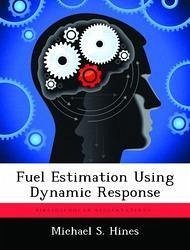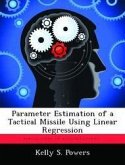New regulations governing satellites in geostationary orbit require satellites to transfer into a parking orbit as part of the decommissioning process. These regulations increasethe demand for accurate fuel estimation techniques for satellites. This study estimatesthe change in fuel mass from the dynamic response of the Air Force Institute of Technology's simulated satellite (SimSAT) to known control inputs. With an iterative process, themoment of inertia of SimSAT about the yaw axis was estimated by matching a model of SimSAT to the measured angular rates. A change in fuel mass was then estimated from the known relation between the change in moment of inertia to the change in fuel mass. Fuel masses of 1, 2, and 3 kilograms were estimated. The fuel estimation process developed in this study was able to estimate the fuel as 1.5664 3.7157 kg, 2.8880 3.8875 kg, and 3.9114 3.4648 kg respectively. While the theory behind the estimation process is sound, the implementation still requires work.
Bitte wählen Sie Ihr Anliegen aus.
Rechnungen
Retourenschein anfordern
Bestellstatus
Storno









